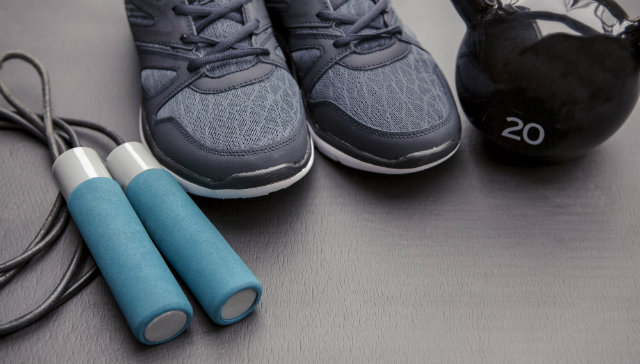Every year during cold and flu season, the office gets a little less crowded. According to the Centers for Disease Control and Prevention (CDC), U.S. workers miss an estimated 17 million workdays annually due to succumbing to the flu. The resulting payout in sick days and lost productivity is mind-boggling.
Although flu viruses can be detected in the U.S. year-round, they’re most prevalent during the fall and winter months. Often, influenza activity starts to escalate in October. It typically peeks between December and February. But, sometimes, flu activity persists until May.
 As the calendar turns from summer to fall, preparing the office for the unrelenting cold and flu season is essential for the health and well-being of both your employees and business. Here’s a rundown of six things you can do now to lessen the likelihood of suffering from a sick-related skeleton staff later.
As the calendar turns from summer to fall, preparing the office for the unrelenting cold and flu season is essential for the health and well-being of both your employees and business. Here’s a rundown of six things you can do now to lessen the likelihood of suffering from a sick-related skeleton staff later.
1. Make Flu Shots Available
According to the Occupational Safety and Health Administration (OSHA), vaccination is the most crucial way to prevent the spread of influenza. Roughly two weeks after receiving a flu shot, the vaccine causes antibodies to develop in your body. The antibodies offer you protection from infection in regards to the particular viruses that are in the vaccine. Each year’s flu vaccine protects against the viruses that research indicates will be most widespread during that upcoming influenza season.
The CDC recommends getting a flu vaccine before the end of October. But, getting the shot later can still be beneficial, even in January or beyond. To protect employees, make flu shots available for them. Contact a local hospital to ascertain whether they provide on-site influenza vaccines. If this isn’t an option, consider reimbursing workers for all or part of the cost of getting a flu shot at the location of their choice.
 2. Invest in Germ-fighting Tools
2. Invest in Germ-fighting Tools
Besides making flu shots available, arm your office with germ fighting weapons. For instance, you might want to invest in:
- Hand-sanitizing gels
- Hand-sanitizing wipes
- Facial tissues
- Products to clean work-spaces
- Surface disinfectant sprays
- No-touch trash cans
Keep these items in easily accessible spaces and notify everyone in your team of their availability.
3. Encourage Sick Employees to Stay Home
One of the best things you can do for your employees and business is to encourage sick workers to stay home. While ill employees might believe they’re being dedicated by coming to the office, they may spread germs and decrease the productivity of the business.
Flu sufferers with a fever should remain at home until at least 24 hours after their fever ends without the aid of medication. To incentivize sick employees to stay home, think about initiating a flexible leave policy that permits workers to do tasks at home if they or someone in their family has the flu.
4. Hold a Health Fair
To educate your employees about the treacherous cold and flu season, consider holding a health fair. Ask a local hospital if they provide health fairs for offices. Contacting a company that specializes in providing this type of service onsite is another option.
Here are two important issues that should be addressed at a health fair:
Debunking the Myths
A variety of myths regarding cold and flu prevention exist. Debunking them can lull your employees out of any false sense of protection they feel they have. A couple of the more common misconceptions people believe will keep them from getting a cold include:
- Dressing warmly
- Getting a vaccine
While heading to work wearing short-sleeves and open-toe shoes probably isn’t a good idea during a snowstorm, dressing warmly in itself won’t prevent you from catching a cold. Colds are spread from one person to another person or from contact with a contaminated surface. While getting a vaccine can protect you from the certain type of influenza virus it was designed for, it won’t prevent you from getting a cold. In fact, no effective universal vaccine exists to protect you from succumbing to common cold viruses.
Teaching Preventative Cold and Flu Behaviors
During their daily routines, workers can do several things to help prevent falling ill from a cold or the flu. Obviously, one of the most important things is keeping your hands clean and germ free. When washing your hands at the office, you should:
- Scrub them for at least 15-20 seconds with soap
- Shut off the sink’s faucet with a paper towel
- Dry your hands with either an air dryer or a paper towel
- Utilize a paper towel to open the bathroom door
Between trips to the bathroom, use a hand-sanitizer. You should especially strive to clean your hands after contact with potentially contaminated surfaces such as:
- Hands or face of coworkers
- Doorknobs
- Handles including those on microwaves, coffee pots, and refrigerators
- Elevator buttons
- Copy machine buttons
- Shared books or other office materials
- Coworkers’ keyboards or phones
- Countertops
- Food or food containers coworkers have touched
Besides keeping their hands clean, employees should avoid touching their face, eyes, or nose. If people utilize water bottles, they should clean them out daily. Employees should always sneeze or cough into a tissue. If a tissue isn’t available, they should sneeze or cough into their elbow rather than their hand. After sneezing or coughing, always wash your hands or use hand-sanitizer. Cleaning shared items such as phones, keyboards, doorknobs, and handles daily with hand-sanitizing wipes is also crucial.

5. Encourage Employee Exercise
Getting regular exercise is thought to boost your immune system. Working out can also decrease your stress levels. Stress is believed to contribute to a host of health issues. According to WebMD, “People who exercise regularly tend to get fewer colds. They may also recover more quickly than people who do not exercise regularly.”
To encourage employees to exercise, offer to reimburse them for the cost or part of the cost of a gym membership during cold and flu season. Equipping an extra space or the break-room with inexpensive exercise equipment such as jump ropes, free weights, medicine balls, kettlebells, and workout bands is also a great idea.
 6. Stock the Break Room with Nutritious Foods
6. Stock the Break Room with Nutritious Foods
In addition to breaking a sweat at the gym, eating healthy during cold and flu season can help prevent you from becoming sick. To foster good nutrition at the office, stock the break room with foods believed to thwart colds and the flu. Brightly colored fruits and vegetables are packed with immune boosting vitamins and minerals such as beta-carotene and vitamin C.
Fabulous selections include:
- Oranges
- Melons
- Kiwi fruit
- Bell peppers
- Carrots
- Broccoli
The water-soluble fibers known as beta-glucans are thought to increase the amount and function of protective immune cells in your body. Oats are a wonderful source of this beneficial fiber. So, you could also buy some packets of oatmeal.
Keeping your gut healthy can also prevent you from succumbing to illnesses. In fact, greater than 60% of your immune defenses reside in the mucosal lining of your gut. Incorporating probiotic foods such as live yogurt into your diet can keep your digestive system in top-notch form. Consider stocking some plain Greek yogurt along with an array of healthy toppings such as walnuts, blueberries, strawberries, and flax seeds.
Is Your Office Ready for Cold and Flu Season?
The start of the dreaded cold and flu season is inevitable. But this doesn’t mean you should plan for a flurry of office absences over the upcoming months. By taking steps to prepare your employees for cold and flu season, you’ll increase your odds of maintaining a happy and healthy staff for the duration of the fall and winter months.






